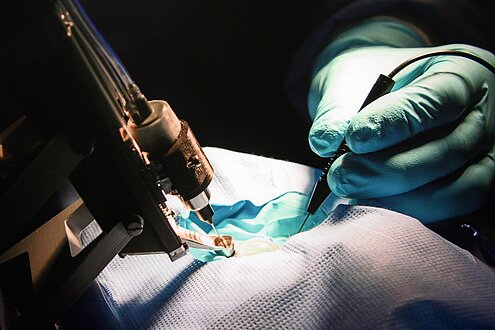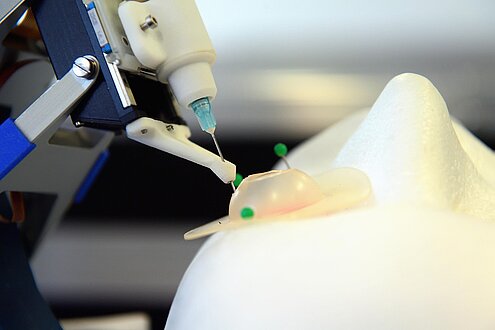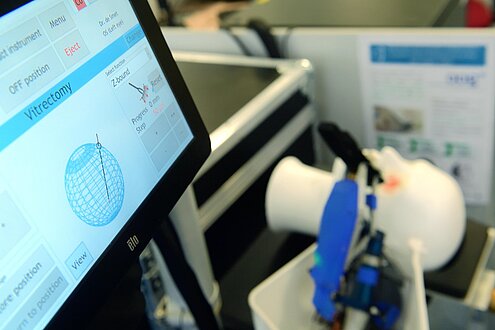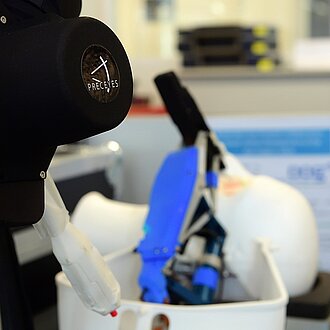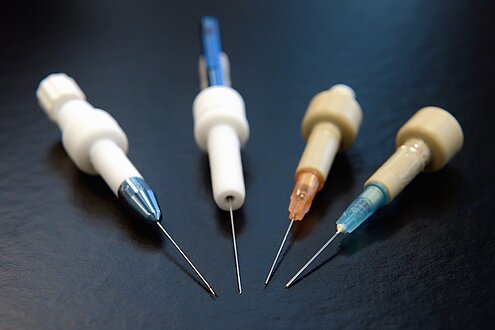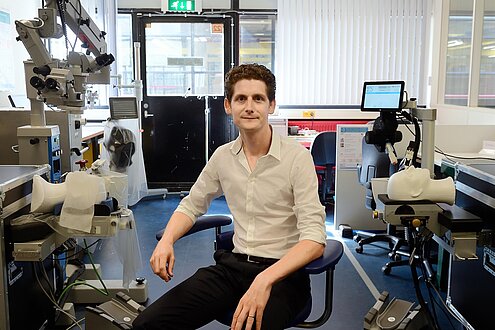'A robot in my eye!' Preceyes develops surgical robots
Preceyes develops surgical robots that allow eye surgeons to perform complex retinal surgery. The surgeon uses a joystick to control a robot-assisted operating arm.
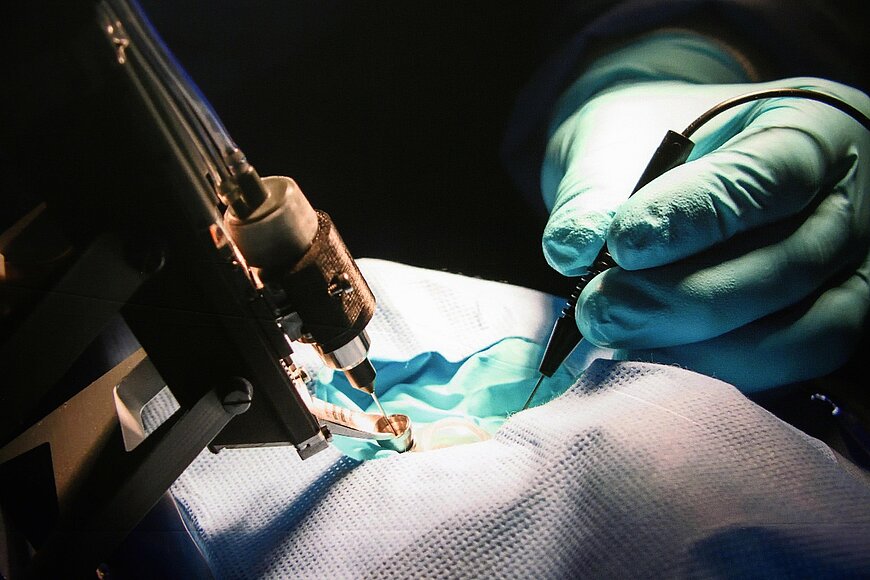
“It sounds like a fairy tale, but it’s true.” It is August 2016 and Reverend Bill Beaver has just been operated on with a Preceyes eye surgery robot. “I can see!” A month earlier, his optician had noticed a membrane at the back of his right eye. The pressure had created a hole in his retina, leading to a total loss of central vision. “It was all very scary and I was afraid that I would lose my sight completely”- and so he seized the opportunity of an operation with both hands.
Reverend Beaver was the first patient to be treated with the aid of the Preceyes robot. Although robots had existed prior to this operation, they were too large to fit in a normal operating theatre. And without a robot, this operation would simply not be possible - even the best surgeon’s hands would not be steady enough. Working at the back of the eye requires huge precision. Preceyes makes it possible to insert a needle through a tiny hole in the wall of the eye without causing damage due to unwanted movement at the back of the eye.
Operations on the eye require the utmost precision. The slightest tremble of the surgeon’s hand can have far-reaching effects. Which is exactly why the robot from Preceyes is the ultimate reassurance for eye surgery patients. The device miniaturises tiny movements made by the surgeon even further. This gives it the capability of treating disorders of the retina to an accuracy of less than one twentieth of a millimetre. And the device neutralises even the tiniest tremble in the surgeon’s hands.
Preceyes develops and sells surgical robots that allow eye surgeons to perform complex retinal surgery. The surgeon uses a joystick to control a robot-assisted operating arm. The first operation using the Preceyes Surgical System was completed successfully in Oxford in September 2016, and many more procedures have been performed since.
Professor Marc de Smet, an ophthalmic surgeon, is the man behind Preceyes. In 2007, De Smet was involved in surgical work at the AMC in Amsterdam. He saw that retinal surgery procedures were becoming increasingly complex and more difficult to perform successfully as a result. He believed that new technology being introduced to the market would make it possible to develop a machine for performing robot-assisted surgery.
De Smet finally came into contact with Maarten Steinbuch, a professor at Eindhoven University of Technology. Together with his doctoral candidates and students, he decided to investigate the feasibility of robot-assisted ophthalmic surgery. Very successfully as it turns out, because Preceyes was founded as an independent private limited company in 2015. Actual operations were performed for the first time in 2016 and the start-up earned that all-important academic seal of approval when the first tests were published in Nature Biomedical Engineering in the summer of 2018. De Smet, who is currently the Chief Medical Officer of Preceyes, feels that this is the ultimate proof of the safety and precision of his design: "Precision and stability that go beyond human capabilities - those are the requirements for redefining the boundaries that apply to existing operating techniques.”
Social impact
De Smet had the idea, but it was Gerrit Naus who succeeded in establishing Preceyes as an independent commercial company. In his opinion, the robot has a huge social impact. “We can directly influence the quality of people’s lives with our system. Retinal disorders are currently the main cause of poor vision and blindness in the Western world and the number of patients is growing exponentially due to the strong link with old age and diabetes. However, operations on the retina are extraordinarily difficult procedures. The assistance provided by our robot means that more surgeons can successfully perform these interventions. The extra capabilities mean that they can even develop new forms of treatment which could never have been performed with the human hand.”
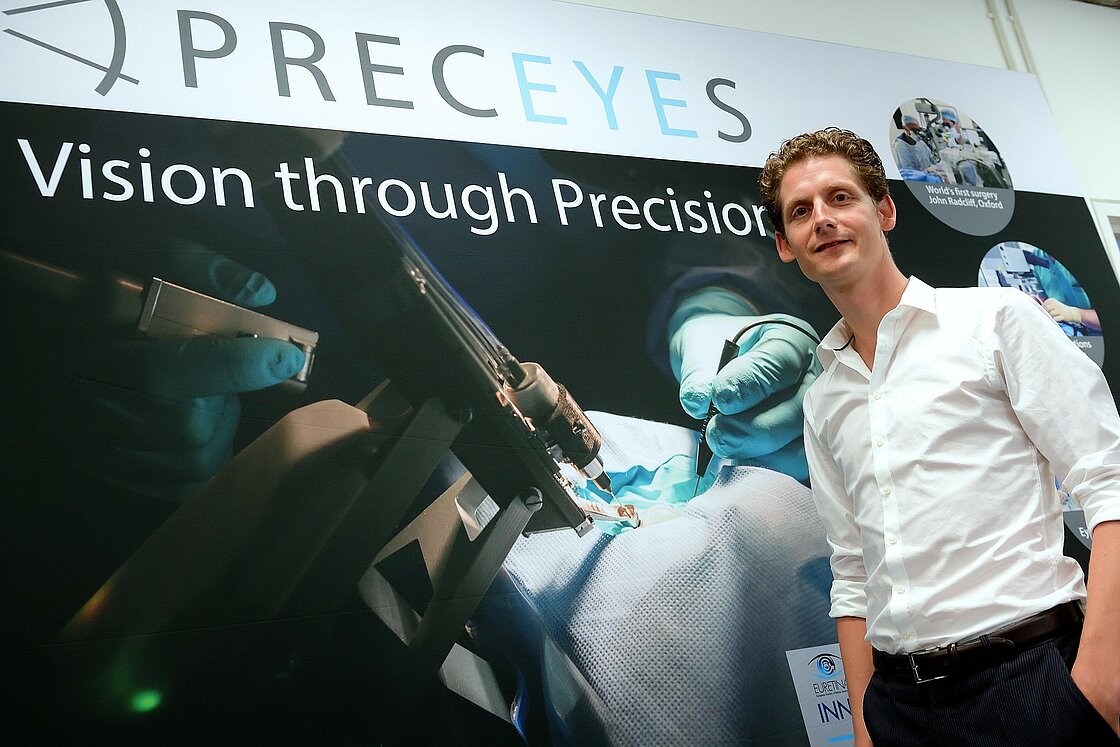
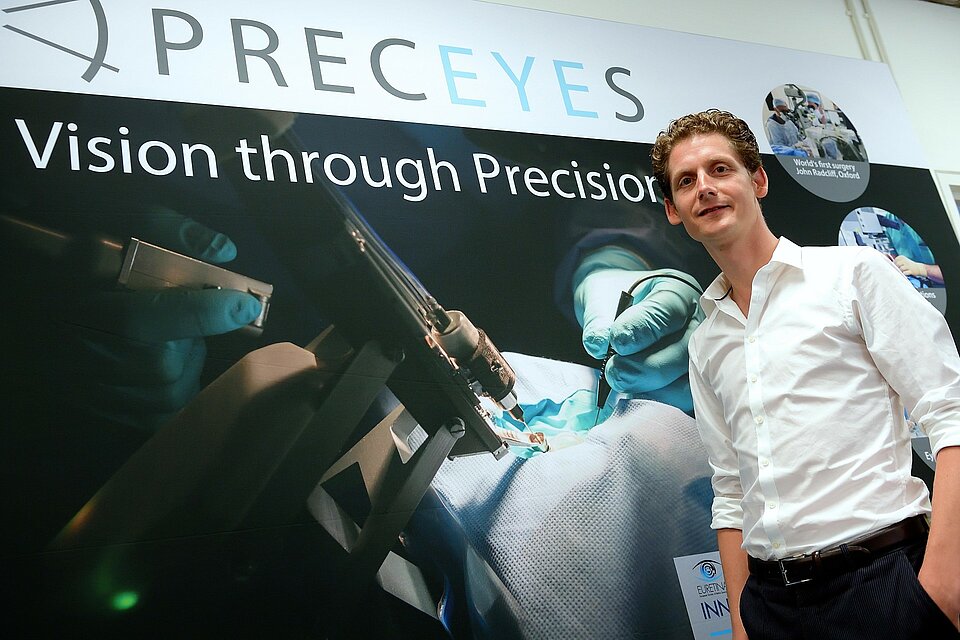
Naus points to the results of research into the quality of life of people who lose their sight in later life. “They experience this loss of sight as worse than manic depression. The consequences are also financially disastrous: in most cases, they are no longer able to work, everything has to be modified in their homes and they sometimes need special transport. All of this has to be paid for, families are crushed by the financial burden and government agencies and insurers have to shoulder a large part of the costs. Better therapies can reduce this huge amount significantly. Quality of life will improve as a result and we will be capable of offering better care at a lower cost. That is our goal.”
And operations like the one undergone by Reverend Beaver are just the tip of the iceberg, says Naus. “In the next few years, more and more new forms of treatment for serious retinal disorders will appear on the market: cell therapy, gene therapy, new medicines and different types of surgery. A major obstacle in this area is the accuracy required for performing the associated procedures. At present, hardly any surgeons would even contemplate accepting the challenge and only a handful of surgeons in the world have the required skills. The technology delivered by Preceyes allows any good ophthalmic surgeon to carry out these procedures successfully.”
A surgical robot is a complex system. Not only is cutting-edge technology required, sophisticated marketing is also essential. Naus: “We have defined and apply a phased marketing strategy. This approach ensures that we pass the strictest medical tests and develop a reliable product that truly helps patients.” What about the competition? “We are the first company to offer a robot for retinal surgery commercially, and the first company with working machines in operating theatres. Our competitors will have trouble matching this level of achievement.”
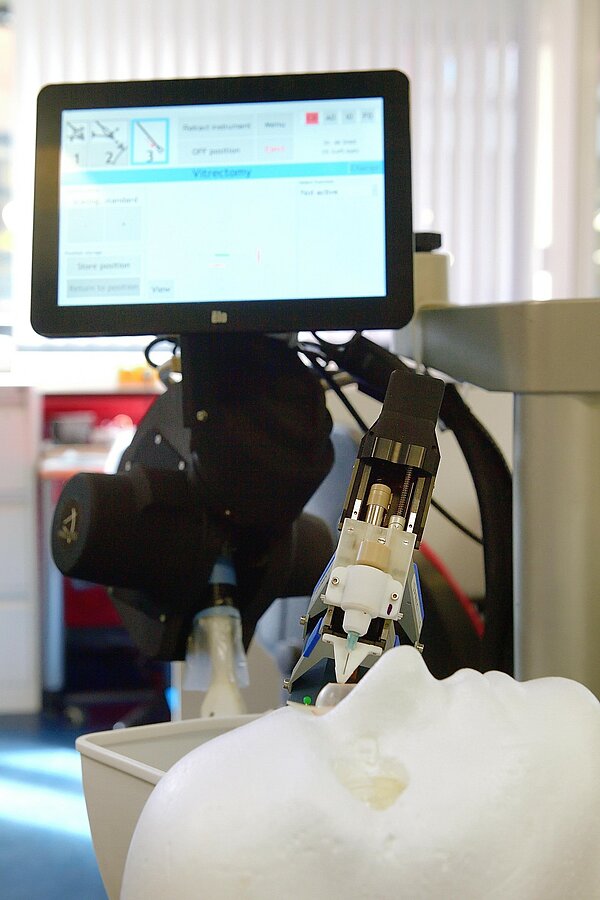
“Our activities focus on the strengths of this region: mechanical engineering, precision electronics and robotics. That is the basis and the reason why this initiative can thrive in this specific area.”
Success stories
Preceyes has achieved some outstanding successes in recent years. Naus: “That very first operation, in 2016 in Oxford, was a huge milestone. Not just because the operation actually took place, but also because of all the publicity it generated. The joyful smile on the face of the patient, Reverend Bill Beaver, when he realised that he could see again, was so rewarding. And so were the first operations at the Rotterdam Eye Hospital where we installed a system at the beginning of 2018. This is what motivates us. This is also the most rewarding aspect of a medical product; we make a strong contribution to quality of life.” Bill Beaver can only agree. “It is the difference between doing nothing and leading a fulfilling and active life”, he says in an interview with the BBC. “I can enjoy art and live life to the full again.”
In 2019 Preceyes also received a CE approval on their system and in the summer of 2020 Preceyes installed a first research and training system in New York Eye and Ear infirmary. With this they take the first step towards the American market. This will be an important basis for future FDA approval in the US market.
Last updated on 12-10-2020.
